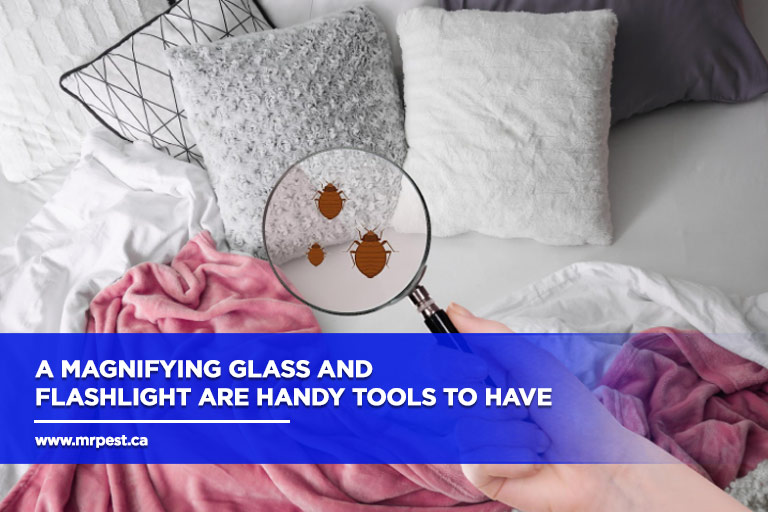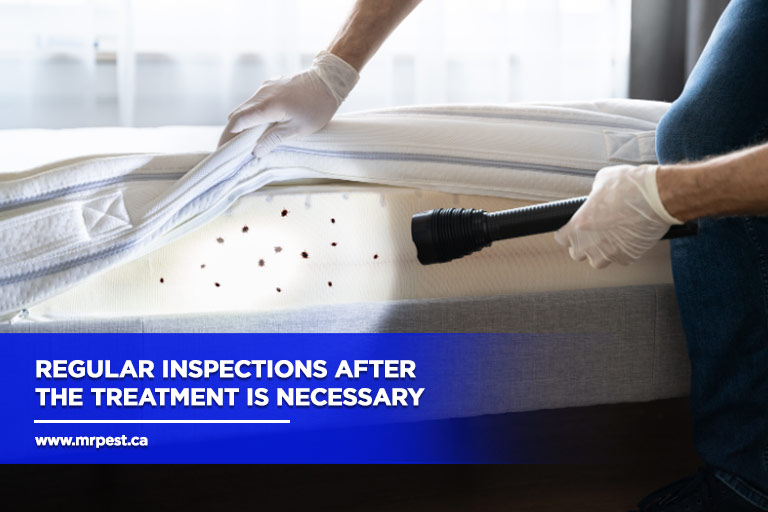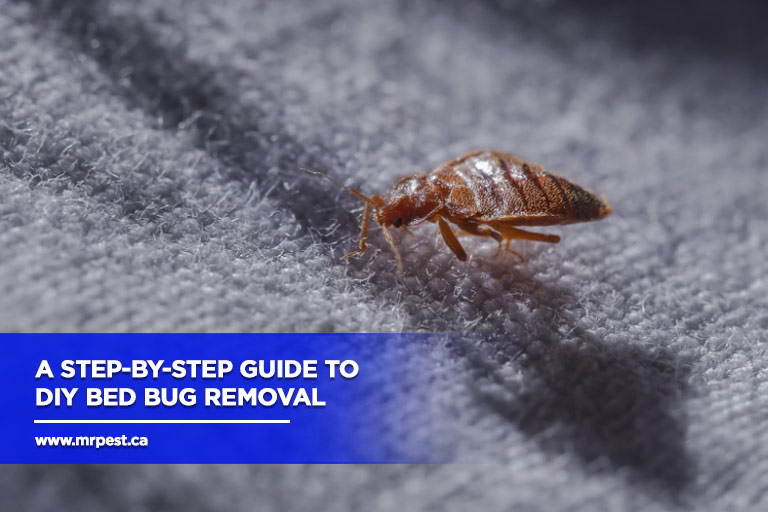Bed bugs have become a growing concern, especially in Ontario, where infestations are on the rise. According to a 2024 report by Global News, many of Canada’s most bed bug-infested cities are in Ontario, with Toronto leading the list for the seventh year in a row.
While facing an infestation can be stressful, catching the problem early is crucial. If you’re dealing with a minor outbreak, a DIY approach can be both effective and affordable. With the right steps and persistence, you can reclaim your home from these unwelcome pests. Let’s explore how you can get started.
Identifying Bed Bugs in Your Home

Before starting any treatment, it’s important to confirm that bed bugs are the source of the problem. These pests are small but leave telltale signs that can help you identify an infestation.
- Look for small, rust-coloured blood spots or dark fecal stains on your bedding and furniture.
- Another sign is the presence of shed skins or tiny, translucent eggs around mattress seams, bed frames, and furniture crevices.
- Check common hiding spots such as the folds of mattresses, behind headboards, under cushions, and in the cracks of walls or floors.
- Using a flashlight and a magnifying glass can help you see these elusive bugs more clearly.
Step-by-Step Guide to DIY Bed Bug Removal
By following these steps, you can take a comprehensive approach to removing bed bugs and ensuring they don’t return.
Step 1: Isolate the Infested Area
To prevent bed bugs from spreading, start by isolating the affected area. Use bed bug-proof mattresses and box spring encasements to trap any bugs inside. Seal off any cracks or gaps in walls, baseboards, and furniture where bed bugs may hide.
Step 2: Apply Heat Treatment
Bed bugs cannot survive high temperatures. Use a steamer on mattresses, furniture, and carpets to kill any bugs hiding in seams or crevices. Place infested items in the dryer on the highest heat setting for at least 30 minutes.
Step 3: Use Diatomaceous Earth
Sprinkle diatomaceous earth, a non-toxic powder, around bed frames, baseboards, and other areas where bed bugs may crawl. This natural powder dehydrates and kills the bugs when they come into contact with it. Be sure to apply it evenly and in thin layers.
Step 4: Apply Insecticides
Use safe insecticides on areas such as bed frames, mattress seams, and along the edges of baseboards. Follow the product instructions carefully and ensure the bed bug insecticide is approved for indoor use. Avoid over-applying in areas where people sleep or rest.
Step 5: Monitor with Traps
Set up bed bug interceptors or traps under the legs of your bed and furniture to catch any bugs that may still be present. These traps will help you monitor the effectiveness of your efforts and prevent remaining bugs from climbing back onto beds or furniture.
Follow-Up and Ongoing Monitoring
After completing your initial bed bug removal steps, regular follow-up is crucial to ensure the infestation doesn’t return.
- Begin by re-inspecting the treated areas weekly, paying close attention to mattresses, furniture, and crevices where bed bugs typically hide.
- Keep an eye out for any remaining bugs, eggs, or signs of activity such as tiny blood spots or shed skins.
- To prevent reinfestation, consider using bed bug encasements on your mattresses and pillows, as these will trap any surviving bugs.
- Regular vacuuming of your home, especially in high-traffic areas, will also help eliminate any lingering pests.
- Be cautious about bringing second-hand furniture into your home without thoroughly inspecting it first, as this can be a common way bed bugs re-enter.
- Setting up traps or interceptors under bed and furniture legs can catch any newly hatched bugs before they have a chance to spread.
Common Mistakes to Avoid During DIY Bed Bug Removal
While tackling bed bugs on your own can be effective, certain mistakes can hinder your progress. Here are common pitfalls to avoid:
- Inconsistent Treatment
- One of the biggest mistakes is not treating all affected areas thoroughly or missing key spots like cracks, baseboards, and furniture seams. Bed bugs can hide in tiny crevices, so it’s important to cover every potential hiding place during treatment.
- Overusing or Misusing Insecticides
- Many people over-apply insecticides, believing more product means better results. However, using too much or the wrong type can be harmful and ineffective. Always follow the manufacturer’s instructions carefully, and only use products labelled for bed bug treatment.
- Not Treating All Stages of the Infestation
- Bed bugs go through various stages – eggs, nymphs, and adults. Some DIYers only focus on killing adult bugs and neglect to target eggs or immature bugs, leading to reinfestation. Use treatments that cover all stages of the bed bug life cycle.
- Failing to Follow Up

-
- Bed bug infestations require persistence. Many people stop after a single treatment and assume the problem is solved. Regular follow-up inspections and repeated treatments are often necessary to eliminate any remaining bugs and eggs.
- Neglecting Prevention Measures
- After the initial treatment, some forget to take steps to prevent reinfestation, such as using mattress encasements or setting up bed bug interceptors. Without preventive measures, it’s easy for bed bugs to return.
When to Consider Professional Help
While DIY bed bug removal can be effective for smaller infestations, there are situations where professional help is the best course of action. Bed bugs are incredibly persistent, and larger outbreaks can become overwhelming without expert intervention.
If you’re dealing with a particularly stubborn infestation (such as bed bugs in Barrie and Orillia, where infestations are becoming more common) calling in a professional exterminator may be necessary.
Experts have access to advanced treatments, such as specialized heat methods and more potent insecticides that are not available for DIY use. They can also perform detailed inspections to ensure every last bug is eradicated. A professional service can definitely save you time, effort, and prevent further frustration.
Take Control of Bed Bugs Today
Dealing with bed bugs in Orillia and Barrie can be a challenge, but with the right approach, you can reclaim your home. If your DIY efforts aren’t enough, don’t hesitate to reach out to Mr. Pest Control for expert help. Call (705) 739-7378 today and let the professionals handle the job, ensuring your home stays pest-free.



